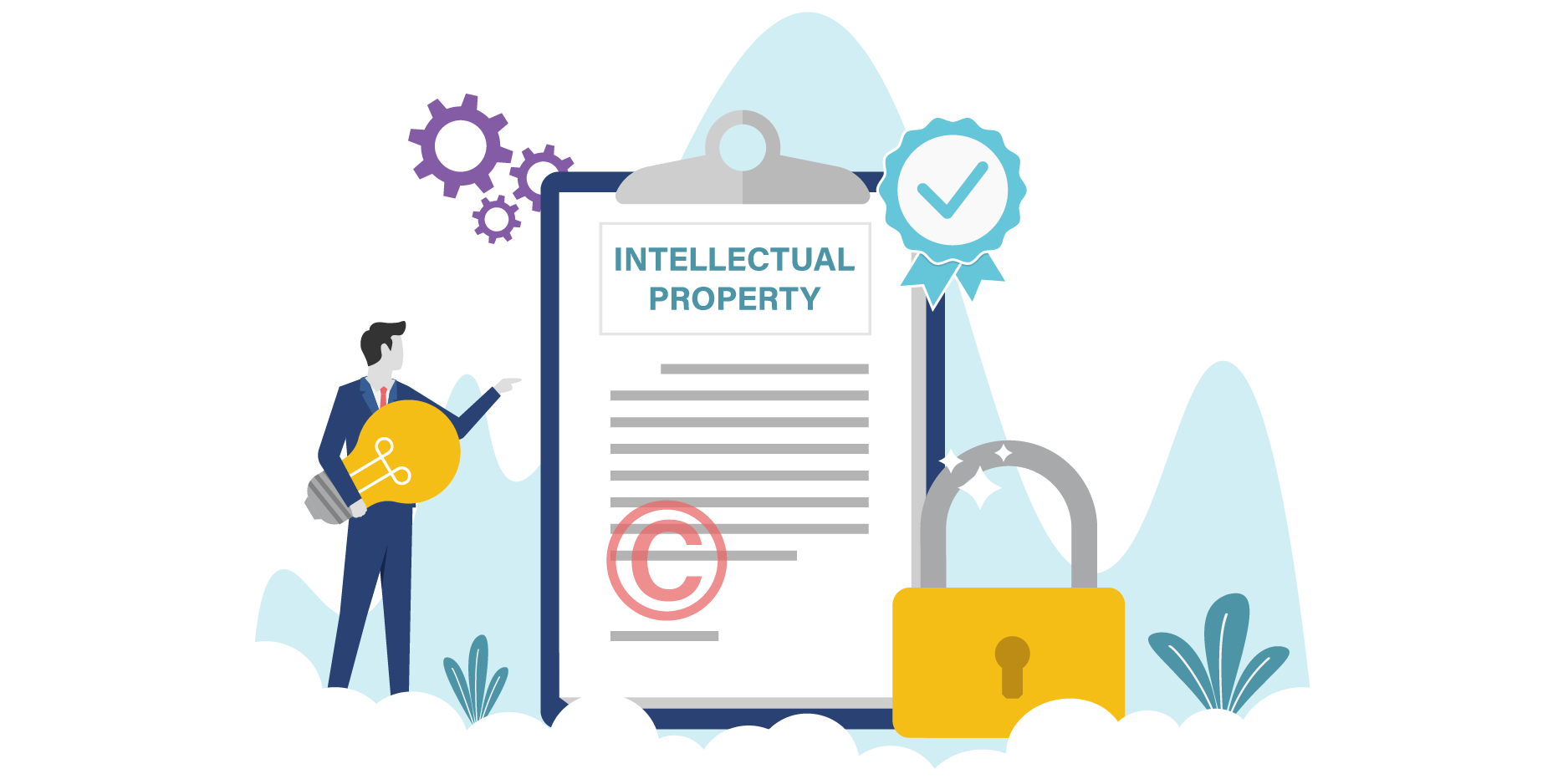Protect Your IP: Why Tech Firms Should Invest in Intellectual Property Insurance
September 23, 2024

In the technology space, your ideas are your bread and butter. Intellectual property (IP), including patents, copyrights, trademarks, and trade secrets, are often among a tech firm’s most valuable assets and they should be protected as such.
When you and your industry peers are constantly working with cutting-edge innovations, there’s always the risk of infringing on another company’s intellectual property, or another company infringing on yours—whether it’s intentional or not. And the last thing you want is to be stuck in a costly legal battle against a firm with deeper pockets than yours!

The bad news? Most standard Professional Liability Insurance policies exclude IP-related claims, so think twice before assuming you’re already covered by your current policy. Keep reading to learn more about what IP risks entail, real-world examples of Canadian lawsuits, and the steps you can take to protect these important assets.
Disclaimer: Please note the information provided herein offers guidelines only and is presented from a liability-based perspective to help you avoid insurance claims. It is not exhaustive and should not take the place of legal advice, nor will it apply to all businesses, settings, and circumstances. For specialized guidance, please consult a risk management professional, lawyer, or a licensed insurance representative.
What are the risks?
Let’s start with the basics: intellectual property infringement refers to when an individual or organization is found to have used, copied, or exploited someone else’s intellectual property (IP) without the proper permissions. This could include patents, trademarks, copyrights, and trade secrets, like confidential business processes, algorithms, or designs.
It’s crucial to note that only the biggest IP lawsuit cases tend to make the news. For every case you’ve heard of in the IP space, there are hundreds more that never make it to this stage of litigation, but distract the attention and the finances of companies all the same.
A tech firm’s intellectual property is vital to its success and competitiveness, making it essential to understand the risks involved and get ahead of your exposures. Not to mention: your investors want their funds to go towards the business, not defending claims—and some clients will even include IP coverage as a requirement in contracts!
Here are the risks you need to be aware of, along with some real-world examples of IP litigation affecting Canadian companies:
1. IP Infringement
Anyone can face allegations of IP infringement, and if you’re ever accused of infringing on another party’s IP, you’ll still have to spend precious time and resources in order to defend—even if the claims are groundless.
On the other side of the coin, it’s your responsibility as a rights holder to protect yourself and take pursuit action if someone else infringes on your IP, whether it’s a competitor or a former employee. IP litigation can be extremely expensive, and without the right coverage in place, pursuing the proper legal action against infringing parties may cause complications and financial strain on your firm.
In reality, your IP is only as valuable as your ability to enforce your rights. Many companies spend considerable financial resources to create and patent their IP, and then do not have the financial resources to enforce their rights when they find others are infringing. This negates the true value of your IP. The following examples of outcomes involving companies who did have the financial resources to enforce their rights.
Real-World Example A: (BlackBerry) vs. NTP Inc. (2006)
Case Summary: One of the earliest and most well-known IP lawsuits involving a Canadian company was between Research In Motion (RIM), the maker of BlackBerry smartphones, and NTP Inc., a U.S. patent-holding company. NTP sued RIM for patent infringement related to wireless email technology.
Outcome: The case was eventually settled in 2006, with RIM agreeing to pay NTP $612.5 million to resolve the dispute. This case highlighted the vulnerability of tech companies to patent infringement claims and the potential financial impacts.
Real-World Example B: i4i vs. Microsoft (2009)
Case Summary: Although i4i is a small Canadian software company, it won a significant legal battle against tech giant Microsoft. i4i sued Microsoft for infringing on its XML-related patent, which was used in Microsoft Word.
Outcome: In 2009, a U.S. court awarded i4i $290 million in damages and ordered Microsoft to stop selling versions containing the infringing technology. In 2011, Microsoft appealed the decision, but the U.S. Supreme Court upheld the lower court’s ruling.
RELATED: Mitigating AI Risks: Tips for Tech Firms in a Rapidly Changing Landscape
2. IP Oppositions and Validity Challenges
Whether it’s a patent, trademark, or copyright, the process of registering IP involves administration and maintenance fees, and often requires professional guidance to navigate smoothly. There are countless companies with active registered trademarks around the world, and it only takes one individual or business to express concern with your proposed trademark application for an opposition to be filed against your firm and disrupt your business operations.
There’s also the risk of a third party raising a challenge against the validity of an IP right; they could argue that the IP right in question shouldn’t have been granted in the first place, or that it no longer meets the legal criteria for protection. A trademark opposition or IP invalidity action can lead to the revocation or cancellation of your IP rights, and can be very costly to resolve.
Real-World Example C: Teva Canada vs. Pfizer (2012)
Case Summary: Teva Canada, a pharmaceutical company, challenged the patent held by Pfizer for Viagra (sildenafil citrate), arguing that Pfizer’s patent was invalid due to insufficient disclosure.
Outcome: In 2012, the Supreme Court of Canada ruled in favour of Teva, invalidating Pfizer’s patent. This decision allowed Teva to produce and sell a generic version of Viagra in Canada.
RELATED: Tech Resilience: 5 Tips to Thrive Amid Economic Uncertainty
3. IP Title Disputes
Teamwork is not uncommon in the tech industry, and the creation of intellectual property is often a collaborative effort. Unfortunately, this could lead to conflicts over ownership with third parties or joint parties down the line—and settling an IP title dispute often involves legal costs and other expenses.
RELATED: Document Like a Pro: Tips to Protect Your Career from Allegations
4. Loss of IP Rights & Future Profit
If your firm’s IP rights are revoked or invalidated, it can pose a huge hindrance to your business activities and cause the loss of future profit. With the right protection in your back pocket, you can recover expected lost future income in the event that an infringement case is lost and it results in an injunction.
RELATED: How long can tech start-ups get away without insurance?
How can I protect my firm?
Intellectual property lawsuits can be significant events for any firm, draining the precious time and financial resources of its stakeholders and staff. But what the real-world examples tell us is that if you have access to the financial resources to enforce or defend your IP rights, David can defeat Goliath.
That’s why we recommend investing in a dedicated Intellectual Property Insurance policy. IP insurance can level the playing field for small to medium-sized organizations, protecting the value of your IP and your organization, while ensuring that you can’t be bullied by large and well-capitalized third parties. Your funders can also rest easy that their investment in your organization is protected and will not be drained by lengthy and expensive legal battles that distract the business from its growth objectives.
IP Insurance will also protect your business from allegations of infringement, including IP rights, copyrights, trademarks, patents, and trade secrets. This coverage is designed to bridge a common gap in most Professional Liability policies for tech firms, which contain specific exclusions around IP and breach of copyright.
With the right tools in your toolkit, your firm will be able to ensure that legal action won’t jeopardize your company, your standing, or your financial well-being. The knowledge that your IP is safeguarded by insurance will also allow your team to focus on their work without the constant fear of litigation, thus fostering a more innovative environment within your firm. And not to mention: third parties knowing that you have the financial resources of an insurance policy to protect you can be enough to encourage them to drop their action against you.
For a well-rounded approach to risk management, be sure to cover all aspects of your business with the following solutions: Professional Liability Insurance, Commercial General Liability (CGL) Insurance, Property Insurance, and Data Security & Privacy Breach Insurance.
How can we help you?
For more guidance on risk management, consult with a dedicated advisor that specializes in the Technology sector, like PROLINK. As a licensed broker with 40 years of experience and over a decade of serving technology firms, we can help you navigate industry trends, implement measures to protect your Intellectual Property, and become resilient in the face of change.
Every firm is different and the right policy for your needs will depend on a variety of factors, including your size, location, operations, the industries you serve, and more. Our dedicated team of advisors will:
- Identify exposures and keep you informed about emerging threats, legislation, and innovations that could affect you;
- Share what steps other firms in your industry are taking;
- Provide you with comprehensive insurance and risk management solutions that align with your business goals and budget;
- Regularly reassess your exposures and readjust your strategy to scale with your leadership, people, and processes.
With greater insight into your threat landscape and a dedicated partner by your side every step of the way, you can confidently stay ahead of the curve. You can work to control your exposures—and your costs—long-term. You can focus on what’s most important: your business.
To learn more, connect with PROLINK today.
PROLINK’s blog posts are general in nature. They do not take into account your personal objectives or financial situation and are not a substitute for professional advice. The specific terms of your policy will always apply. We bear no responsibility for the accuracy, legality, or timeliness of any external content.




